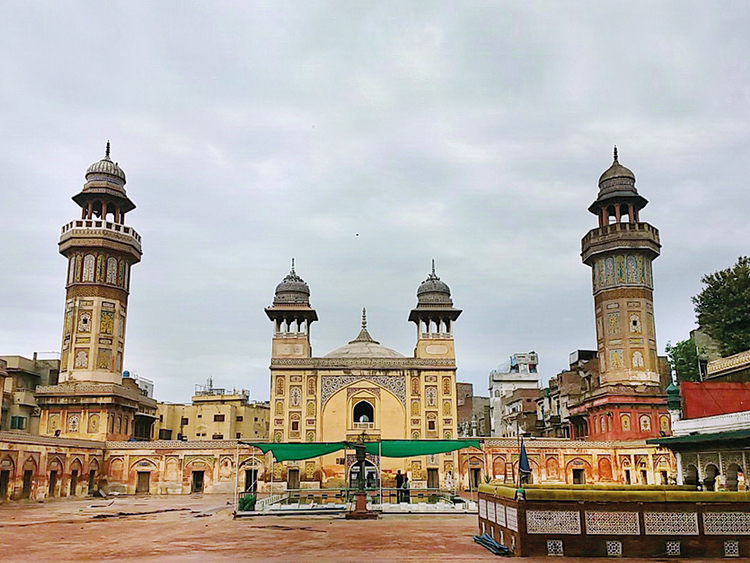Lahore: Mosque Wazir Khan, built in 1634-35 by Hakim Ilmuddin, in the era of Mughal emperor Shah Jahan, is popular with tourists, historians and students.
But for 60-year-old Shaikh Alauddin it is part of his life. As a toddler he started going to this mosque near his home and even today he prays there five times daily.
Shaikh, who runs a shop selling imported suitcases and bags in front of Wazir Khan Mosque, appreciates the efforts made by Walled City Lahore Authority to restore the mosque’s glorious structure.
“We have spent our childhood watching this glorious mosque. The conservation which is being done at the mosque is remarkable and the process must continue,” Shaikh says.
“This beautiful sight of Mosque Wazir Khan Chowk that we see today was not there. The whole area had been encroached upon. There were illegally constructed shops along the northern wall of the mosque. There used to be a well in the courtyard, which has now been closed,” he adds.
The royal trail starts from Delhi Gate near the mosque. The royal trail is the cleared part of the walled city and has many historical buildings on it. The mosque’s traditional chowk (courtyard) in front has been completely restored.
The recent conservation of the outer wall, and the northern wall façade has started attracting tourists.
Colourful tour guide
Mukhtar Ahmad, 42, is a rangela (decorated) rickshaw driver. He takes visitors to the sites along the Royal Trail starting from Dehli Gate. He charges Rs1,500 (Dh86) for a tour with a family or groups of tourists.
“I got this job due to this recent conservation work. More people would visit when this sultry and humid weather of monsoon is over. When guides are not available I provide the information to local and foreign tourists. I can speak English, but in my own Punjabi style,” Mukhtar sAys while narrating some facts about the Delhi Gate and Mosque Wazir Khan in rudimentary English enunciated in his Punjabi accent.
Rashid Makhdum, senior architect and consultant, Aga Khan Cultural Service Pakistan, says the PC-1 (Project plan of five years) of the conservation of Mosque Wazir Khan was approved in March this year.
“We have renovated the chowk in front of mosque and it gives a beautiful view to tourists,” he says.
He has been associated with the Aga Khan Trust for Culture Pakistan more than 10 years.
“Renovating and conservation is a daunting task for sure as we are confronted with the presence of houses constructed on the southern wall of mosque Wazir Khan. This not a good sign as people live in these houses,” Rashid said.
“We will clear the view and restore southern wall of the mosque and other old-architecture which is present around the mosque by the end of this year, he said.
Reviving tourism
Kamran Lashari, Director-General, the Walled City Lahore Authority, said, “Every year the contract is renewed and we are committed to revive the tourism in the most beautiful areas of the walled city of Lahore.”
“Conservation of the northern façade of the Wazir Khan Mosque by the Aga Khan Cultural Service Pakistan with support from the Royal Norwegian Embassy and Aga Khan Trust for Culture in collaboration with the Walled City of Lahore Authority was completed last year,” Lashari said.
The encroachments of illegally built steel shops on the front side of the Wazir Khan Mosque were removed before the conservation work was started.
The mosque is famous for its kashikari, a glazed-tile mosaic work which makes this mosque unique among cultural monuments.
Lashari said rehabilitation of the northern façade and the adaptive reuse of its hujras, or rooms, for the sale of traditional handicrafts would form a template for the conservation of the entire mosque.
Covering an area of 279 x 159 feet, the mosque is entirely constructed in cut and dressed bricks laid in kankar lime with a scanty sprinkling of red sandstone in the gate and the transept, according to the Agha Khan Trust.
The courtyard is divided into two parts. The upper part is about two metres higher.
The courtyard is flanked on its east, north and south sides by 32 small hujras (rooms) of different sizes.












